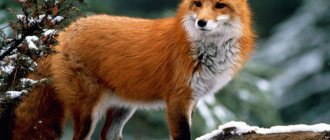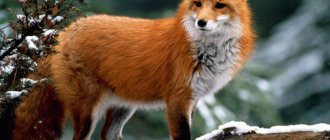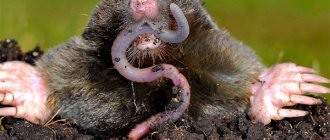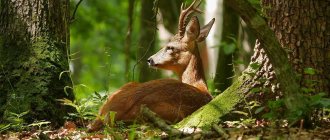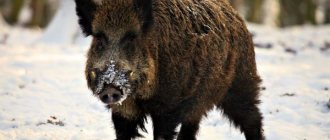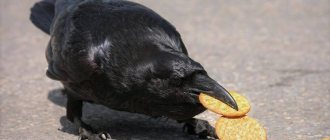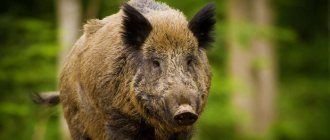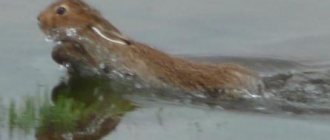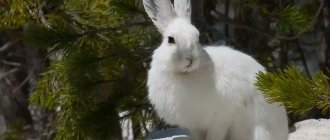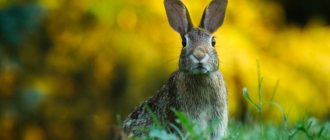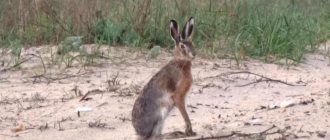Almost every day we come across such an animal as a hare. Lovers tenderly call each other this word, children are given toys in the form of this cute eared animal, and cartoons featuring all kinds of bunnies often flash on the monitors. But what about real animals? Where, and most importantly, how do they survive? We know that in the wild they live in groves, taiga and steppes. But not everyone knows what a hare eats in the forest and what helps it survive in the wild. Therefore, it is worth examining this topic in more detail.
Habitat
Before you find out what hares eat in the wild, it’s worth finding out where their habitat is. If we talk about white hare, they are more often found in the tundra zone and forests, which are diluted with meadows and streams. Of course, if these are impenetrable forests that are densely overgrown with trees, the hare will not be found, since it chooses places where shrubs grow or near agricultural areas. In such areas it is easier for them to find food, regardless of the time of year. You will hardly find them in the southern parts of the country. But the brown hare chooses open places - the outskirts of fields, steppes and meadows. If it is found in a forest, there is likely a large area nearby. The lifestyle of these two species is different.
What does it eat?
The brown hare's feeding type is herbivorous. This type of animal prefers cereals in the form of buckwheat, cereals and sunflower seeds. Herbs include clover, chicory, alfalfa and dandelions. Feeling hungry at night, the hare travels kilometers in search of food.
In winter, the hare feeds on branches, buds, shrub bark and young bark of fruit trees.
The brown hare became wary
Settling near agricultural land, hares can greatly damage winter crops, vegetable gardens and orchards, because they will attack crops grown by humans for food.
Whites
Although these hares are slightly smaller in height than hare, they are still considered large. The length of an adult white hare is 44-65 cm, and the weight can reach 4-6 kilograms. His ears are about 9 centimeters. The color of the fur changes to white in winter. Only the tips of the ears remain dark. In summer, depending on where it lives, its fur ranges from reddish-gray to gray with brown hairs. The tail is rounded. If the white hare lives in a more southern area, where snow does not last long in winter, its fur retains its summer color. The question of what the white hare eats can be easily answered by observing its lifestyle. These animals try to stay in forest areas, since here they can eat the bark of young trees and the berries of bushes.
Natural enemies of the brown hare
Photo: Large brown hare
The natural enemies of the hare have a huge influence on its population. In a year, predators are capable of destroying up to 12% of the total number of hares. This figure is directly dependent on the number of predators living in a particular area, as well as on the availability of other food and the number of hare themselves.
The most dangerous animals for hares:
- Foxes;
- wolves;
- lynx;
- dogs;
- cats;
- winged predators: eagles, eagle owls, hawks.
All that remains for the Russians is camouflage, running fast and confusing their tracks. The gray-brown color helps the hare hide not only among branches and fallen trees, but also in the middle of snowy plains. A cunning person can pretend to be a stump or a hummock covered with snow. Both speed and the ability to swim save hares - in the struggle for life, a hare can swim across a river.
What do hares eat?
It is worth noting that these long-eared animals are true vegetarians - they do not even eat insects. In biology textbooks, hares are called herbivores, but their diet includes not only various types of grasses, but also
twigs of bushes, leaves, roots, tubers and berries. Since they do not store up for the winter, the question arises of what the hare eats in the forest during severe frosts. When snow falls, the animals choose young trees with soft bark, stand on their hind legs and gnaw it. At this time of year, hares try to stay close to fields where there are remains of grain crops or winter varieties have already been sown. Some individuals move closer to rural areas because they can profit from hay here.
During heavy snowfalls or rains, the animals remain in shelters and do not go out in search of food. In order to nourish themselves with protein at these moments, they pick up their droppings, which, when they enter the digestive tract, are digested like regular food.
Some people believe that the favorite delicacy of hares is cabbage, and they are even surprised: what does a hare eat in the forest if there are no heads of cabbage there? In fact, it is a myth that the “eared” have a special love for this vegetable. Rather, the hare will give preference to beets, cucumbers and potatoes. There are even known cases when “oblique” devastated fields with these crops.
Feeding at home
It is worth knowing that the nutrition of hares, especially at home, is difficult to bring closer to natural. The fact is that hare milk has no analogues. Cow's milk and infant formula do not have the same fat content as rabbit milk. Some farmers feed the rabbits with cow's milk with eggs or cream, but this increases the likelihood of the rabbits dying. You should not use condensed milk due to its high sugar content.
Eared animals should be fed at least 2 times a day in small portions of 5-10 ml at a time.
Only a month-old bunny begins to eat on his own. Young bunnies eat well fresh grass, vegetables and fruits; they love carrots, tree leaves, and berries. From the 2nd month you can introduce ready-made foods, but not earlier, as they are less digestible and cause discomfort to the animal. For the winter, you can stock up on dried grass harvested in the summer.
Bunnies
With the onset of cold weather, the mating season begins for hares, and already in February
offspring appears. Since we have found out what a hare eats in winter, it is worth finding out how young hares survive at this time of year. After birth, the mother feeds them and immediately leaves for several days, so as not to attract a predator with her smell (babies do not emit aromas). A couple of days later she returns for another feeding - and runs away again. Babies usually have enough thick hare milk to last for many hours. After just seven days, the babies begin to develop teeth, and after another three they begin to chew the grass that the hare has lined in their hole.
Variety of species
Representatives of science are still arguing about the number of species in this family: some say that there are about 32 species, others, who include rabbits in this family, argue about 45 varieties.
In our country, we can distinguish 4 types of these animals:
- hare;
- hare;
- tolay;
- Manchurian.
In the wild, this mammal eats almost any plant it can find. It is clear that in the warm season there are no special problems with this, since there is enough food everywhere - clover, wood sorrel and much more. Moreover, for this purpose, hares have a well-developed sense of smell - after all, they feed mainly in the dark.
Hare and man
Some, looking at cute fluffies, try to tame them. But in order to provide him with proper care, you need to know what a hare eats in the forest when free. It is better not to give the animal food that is unusual for it by nature. Although it is possible to train a hare to eat meat, you should not “mock” the herbivore. People who breed these animals have noticed how long-eared animals love corn. Thanks to this product, the bunny grows up quickly and is not prone to illness. If you keep this animal at home, in the summer it is worth stocking up on grass that you can dry in the sun and give to your pet in the winter.
The structure of the digestive tract
The animal feeds on plants, roots, and tree bark. They feed on heavy food, so nature has provided the animal with a large cecum and constantly growing teeth. There are no fangs; between the incisors and molars there is an empty space called a diastema. The right and left rows of molars are connected by a thin bridge, forming a hard, bony palate. The upper jaw of animals has 2 pairs of incisors: a large one in front, a small one with small incisors behind. The teeth constantly grow in order to grind down the incisors, the animal is forced to gnaw.
The stomach consists of 2 sections responsible for certain functions:
- fundamental – food fermentation;
- pyloric – breakdown of food.
A few facts about hares
We learned about how the hare (brown and hare) lives and what it eats, but many will
It’s interesting to know a few facts about these cute animals.
- Hares are very common inhabitants of our planet; they are found in every part of the world except Antarctica.
- The animal's long ears help it escape from overheating. Through this “channel” heat is removed from the body. Also, when it rains, the animal presses its ears to its body, otherwise if water gets inside, it will get sick.
- This animal is very hardy. It can maintain a speed of 50 km/h for a long time and still continue to make turns.
- There are 45 species of hares in total, which are divided by zoologists into three groups: rabbits, tree hares and true hares.
- Only relatively recently did scientists assign these animals the species lagomorphs. Before this, they were considered a type of rodent.
- Males live 5 years, females - 9. In captivity, some can become long-lived and live up to 13 years. In the wild, hares die young from the paws of predatory animals and rarely live to old age.
- In winter, the animal grows fur near its nose as protection from cold air.
- It is known that the hare is popularly called “squint”, but he is by no means cross-eyed. The hare received this nickname because of the way it moves, because the animal constantly confuses its tracks.
- The “obliques” communicate with each other by knocking their paws, stuffing them like drumsticks.
- These animals share territory, and even when being rescued from a predatory animal, the hare will not run into someone else's territory.
- Since long-eared animals constantly gnaw on bark, their teeth wear out, but new ones grow to replace them.
- There is a case in history when a hare had all the habits of a dog, since he was fed and raised by a dog. The bunny attacked other people's dogs and bit.
Varieties
In total, 32 breeds of hares are known, but scientists insist on including hares and rabbits, of which there are about 45 species, in the breed.
White hare
This is a rather large animal, weighing approximately 1.5-5 kg. The animal's ears can reach 10 cm in length. The short, small tail is always snow-white, the dimensions range from 5-10 cm. The hare's paws are wide and thick, which helps it jump in deep, loose snow.
The color of a hare in summer depends on its habitat: from gray with red stripes to dark gray. The beast's belly is white. Hares are larger and heavier, but do not differ in color. In winter, the hare puts on a snow-white fur coat, which is why it got its name.
The white hare can be found even in Argentina. In Russia, it lives everywhere and is the object of hunting, since hare meat is famous for its tenderness.
Brown hare
The animal weighs about 6-7 kg, the color is dark gray with speckles, the eyes are dark brown. The hare's ears are long, can reach 14 cm. The tail is elongated, its length is approximately 8-14 cm. Since this species lives in places with little snow, its paws are narrow and dense. The beast prefers the steppe.
The hare was introduced to Australia, where it became a national disaster. Uncontrolled reproduction led to the death of the local fauna and the loss of a huge amount of grain crops. The exercise is conducting research aimed at eliminating the beast from Australian territory.
Tolai hare
A desert animal, accustomed to living in a warm habitat. The size of the beast is small. Weight – 1.5-3 kg. The legs are long and narrow. It has long ears and a tail. The fur is gray with a yellowish or brown haze. Dark and light colors alternate, the hare looks motley. The animal's tail is dark, but there is a distinctive feature - at the end there is a brush of white, coarse hair.
Manchurian hare
A miniature fragile animal, weighing up to 3 kilograms. Has short ears and a tail. The coat is motley, with a stripe of black hair visible in the center of the back. Sometimes there are melanists - hares with black fur.
Antelope hare
Not found in Russia. Habitat: Mexico, Arizona in the USA. The beast's ears reach 20.5 cm and serve not only for hearing. Given the hot climate, the ears are a kind of heat exchanger and help lower body temperature.
Chinese hare
A miniature animal weighing up to 2 kg, it lives mainly in China and Vietnam. Loves hills, meadows with short grass.
LiveInternetLiveInternet
- My recipes (682)
- Vegetables (55)
- Meat dishes (46)
- Sweet pastries (37)
- Salads (28)
- Snacks (25)
- Baking (22)
- Pastry dishes (21)
- Fish dishes (17)
- First courses (12)
- Desserts (12)
- Canning vegetables (11)
- Cereals (7)
- Egg dishes (7)
- Dairy dishes (4)
- Fruit preservation (2)
- Dacha (424)
- vegetables (116)
- fertilizers, soil preparation (58)
- flowers (39)
- trees and shrubs (29)
- Diary of a summer resident (18)
- design, construction (16)
- fishing (13)
- country menu (1)
- Alia's cookbook (38)
- Sweet pastries (22)
- Baking (4)
- Vegetables (3)
- Blanks (2)
- Salads (2)
- Desserts (1)
- Flour dishes (1)
- Snacks (1)
- First courses (1)
- Fish (1)
- Meat dishes (1)
- Gluten Free Dishes (2)
- Cooking recipes (10965)
- Baking (1528)
- Snacks (858)
- Meat (572)
- Conservation (298)
- Fish dishes (250)
- Drinks (147)
- Sauce (136)
- Central Asian cuisine (21)
- Oriental cuisine (Middle and Far East) (19)
- Ukrainian cuisine (14)
- Indian cuisine (12)
- Spices (12)
- Dishes in pots (10)
- Georgian cuisine (9)
- Cooking tips (5)
- Cooking magazines (5)
- Nutrition for nursing mothers (5)
- Italian cuisine (3)
- salad (798)
- Meat (180)
- Fish (91)
- Other (90)
- Vegetables (79)
- Cold appetizers (335)
- Other (78)
- Sandwiches (78)
- Fish (76)
- Vegetables (59)
- Meat (50)
- Egg (30)
- Hot snacks (125)
- Meat snacks (46)
- Hot sandwiches (35)
- Vegetable snacks (21)
- Fish snacks (14)
- Meat pates (11)
- Sweet baked goods (1981)
- Pies (441)
- Cakes (415)
- Cookies (234)
- Plyacki (233)
- Pies and buns (192)
- Cupcakes, muffins (141)
- Cheesecakes, cheesecakes (113)
- Cakes (86)
- Easter cakes (62)
- Rolls (54)
- No bake (39)
- Pie fillings (6)
- Baking not sweet (793)
- Pies, tarts, quiche, etc. (250)
- Pies and buns (222)
- Lavash (76)
- Bread products (72)
- bread machine (48)
- Chebureks, belyashi, khichins (43)
- Pizza (33)
- Cupcakes, muffins (28)
- Cookies (23)
- Casseroles (71)
- Meat (35)
- Vegetables (26)
- Others (19)
- Fish (2)
- Meat dishes (960)
- Bird (323)
- Pork (225)
- Minced meat dishes (218)
- By-products (108)
- Beef and lamb (96)
- Sausage (45)
- Shish kebab (20)
- Flour dishes (475)
- Pancakes, pancakes (266)
- Dumplings, manti, ravioli, etc. (145)
- Noodles, pasta, pasta, lasagna, etc. (64)
- Winter preparations (548)
- vegetables (295)
- Jams, preserves (55)
- eggplant (45)
- tomatoes (43)
- Fruits (32)
- salads (30)
- adjika, ketchup, sauce (28)
- cucumbers (22)
- Canned fish and meat (14)
- Plans for this year (13)
- pepper (13)
- freezing (7)
- Desserts (832)
- Cream, soufflé (94)
- Ice cream (71)
- Chocolate (38)
- Jelly, jelly (26)
- Salads (23)
- Puddings (18)
- Cream (7)
- Drinks (3)
- Vegetables (984)
- Zucchini, eggplant, pumpkin (226)
- Potatoes (210)
- Cabbage (109)
- Other (63)
- Mushrooms (62)
- Tomatoes, peppers (41)
- First courses (185)
- Soups (117)
- Puree soup (26)
- Borscht, cabbage soup (23)
- Solyanki, ukha (10)
- Cold (10)
- Cereals (135)
- Other (56)
- Pilaf, pilaf (49)
- Porridge (16)
- Risotto (9)
- Mamaligi (4)
- Dairy dishes and eggs (186)
- Cheese, cottage cheese (118)
- Egg (58)
- Milk, cream (9)
- Lactic acid dishes (5)
- Family holidays (228)
- Easter (97)
- festive table (71)
- New Year (40)
- Christmas (20)
- Maslenitsa (7)
- handicrafts (634)
- For granddaughter (272)
- Knitting (90)
- Fashion (76)
- Jewelry (29)
- Embroidery (22)
- Bisser (17)
- diary assistant (280)
- Internet information (90)
- Educational (58)
- diagrams, emoticons and more (31)
- congratulations (31)
- text frame (13)
- Culture and world (328)
- I am a Christian (81)
- cinema (53)
- enjoy (35)
- Humor (30)
- Poems (26)
- Photos (25)
- History (17)
- painting (16)
- world pages (15)
- Fairy tales, sayings (13)
- aphorisms (11)
- beauty (8)
- Home and comfort (363)
- Health (155)
- all about household chores (78)
What to feed a wild hare
Summer food
In summer, hares are provided with a fairly large selection of food. Animals love to eat various herbs: sedge, wormwood, dandelion, clover, cereals, and legumes. Hares eat berries (especially blueberries), various seeds, mushrooms, horsetails, young shoots of maple, oak, aspen, and willow. They can sneak into fields to taste cultivated crops (carrots, cabbage, beets), and also into gardens to gnaw on the bark of apple, pear and plum trees, which causes great damage to the farm. It is easy to combat such pests - just install a small fence around young trees.
Fishing activities
Humans remain a dangerous enemy for white hares. In many territories, mammals are protected and are listed in the Red Book. But people continue to exterminate animals through poaching. The skin of this animal is as valuable as its meat.
In some regions they organize sport hunting for hare. They run very fast, reaching speeds of up to 70 km/h
. It is impossible for a person to catch up with a mammal. Therefore, hounds are used for hunting. They track the hare and force it to be in a visible place so that it can be shot.
In winter, on a surface devoid of trees, the snowshoe hare is very easy to spot. The black eyes and nose stand out clearly in the snow. Therefore, the hare’s main salvation is its speed.
Keeping and caring for a hare at home
Under natural conditions, a hare covers a very long distance. Therefore, it is better to keep pets, except small ones, in a free-range apartment or in enclosures where there is space, rather than in cages. But it is worth considering that they leave their excrement everywhere and you will have to clean up their droppings.
Young bunnies need warmth; they need to have their tummy massaged and wiped under their tail with a cotton swab moistened with warm water.
No matter how much you try to love your pets, do not forget that these are wild animals, and you need to keep them as close to natural as possible. Now you have an idea of how the hare chooses its diet and in what conditions it should be kept.
Autumn, winter, spring
In autumn, the long-eared animal feeds on the same berries, herbs, ripe apples and other fruits, as well as mushrooms. Hares do not hibernate, but they also do not store food for the winter, so they have to dig out food from under the snow. Dry grass is no longer as nutritious as fresh grass, so rodents need to get additional food. They dig up roots and eat tree bark. In the spring, depleted by the lack of vitamins, hares actively search for fresh grass, becoming easy prey for predators.
